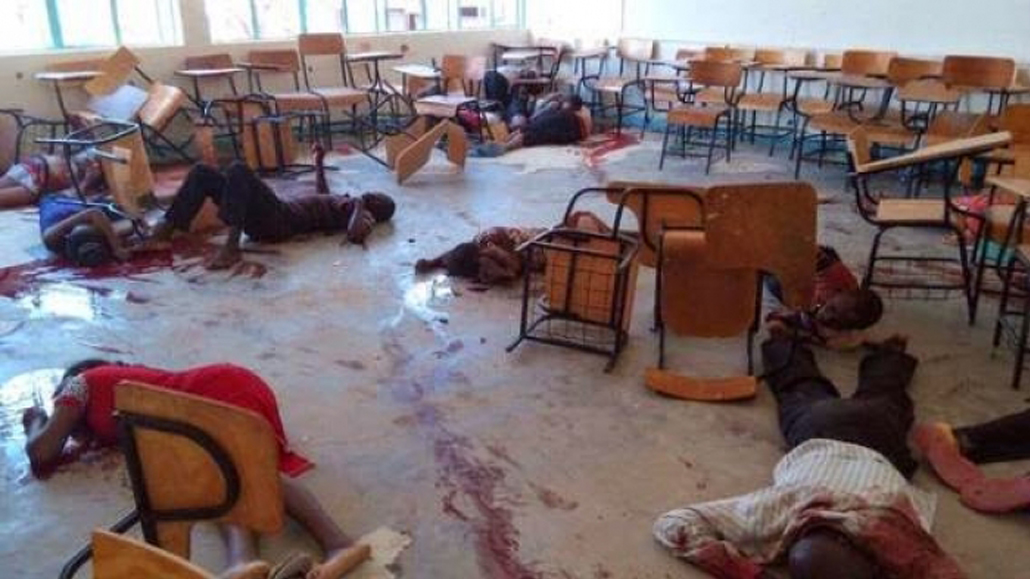One of the recent Social media trend was about the Garissa University assault in Kenya, which took about 147 lives. Several were injured. But this happened on April 2, 2015. But why trend now?
In the always-now world of social media though, it appears many people clicked the link their friends had shared, didn’t notice the April date, and got confused, thinking the Kenya attack was a breaking story.
On April 2 2015, five heavily armed militants, after killing two security guards, started shooting on students. The attack was considered as second deadliest assault in Kenyan soil, the first being 1998 Nairobi blast on the US Embassy which took more than 200 lives.
Hours after the assault started, the Kenyan Security Forces cornered the militants in a dormitory. Four of the militants died using their suicide vest, while the fifth was reported to be arrested. All of the militants were associated to the terror group al-Shabab, an Islamist group from Somalia.
But while some of those clicking on the story were mistaken about timing, others shared it to make a point. They were criticizing Western media organizations for allegedly failing to cover the Kenya massacre as prominently as they covered events in Paris.
It all started from Paris attacks. The November Paris attack drew the whole attention of the World with many Hashtagging “Pray for Paris”. Media did an exclusive coverage and the world was speaking about Paris for the next one week. Many media failed to recognize and give proper importance to the terror attacks going on at several places which were happening at the same Window leading to many users think that Paris Terror attack is over-hyped. The disparity of attention between the Kenyan attacks and the French attacks are being blamed on the fact that Kenya is a third-world country. But one may think that Paris got more media coverage than Kenya because terror is normal in Kenya. Let’s take Al-Shabab for example. What made them attack Kenya at first?
Kenyan troops entered Somalia in October 2011 in an effort to stop the Islamists from crossing the long, porous border between the two countries and kidnapping people – but their presence achieved the opposite effect, provoking al-Shabab to increase its activity in Kenya
Just look at the number of terror attacks by the Al-Shabab prior to the University attack .
On March 2015, Al-Shabab claimed responsibility for attacks in the county of Mandera on the Somali border in which twelve people died. Four of them died in an attack on the convoy of Mandera County Governor Ali Roba.
Al-Shabaab carried out large-scale attacks in Mandera last year. The militants hijacked a bus and singled out 28 non-Muslims forcing them to lie on the ground before shooting them dead. Ten days later, 36 non-Muslim quarry workers were killed by the extremists.
Police statistics show that 312 people have been killed in Al-Shabaab attacks in Kenya from 2012 to 2014. Thirty-eight people were killed and 149 wounded in Garissa in the same period, according to police statistics.
The hashtag #PrayforLebanon – a reference to suicide blasts that killed at least 41 in Beirut the day before the Paris attacks – was in particular used more than 800,000 times on Twitter. The vast majority of those tweets came not at the time of the bombs in Lebanon, but after the Paris attacks (#PrayforParis hashtag has been used more than 10 million times).
The “Pray for…” trend also lumped in other unrelated events. More than 1.6 million people tweeted “Pray for Japan” when news broke over the weekend of a massive undersea earthquake – but unlike the massive devastation in 2011, no-one was killed or injured in that event.
Meanwhile Facebook was also accused of double standards when it gave users the option of putting a filter over their profile photos in the colors of the French flag which also led many to trend Kenya attacks as an incident to criticize proper lack of coverage from Western Media.
———————————
Written by S G A Thomas.






ONE COMMENT